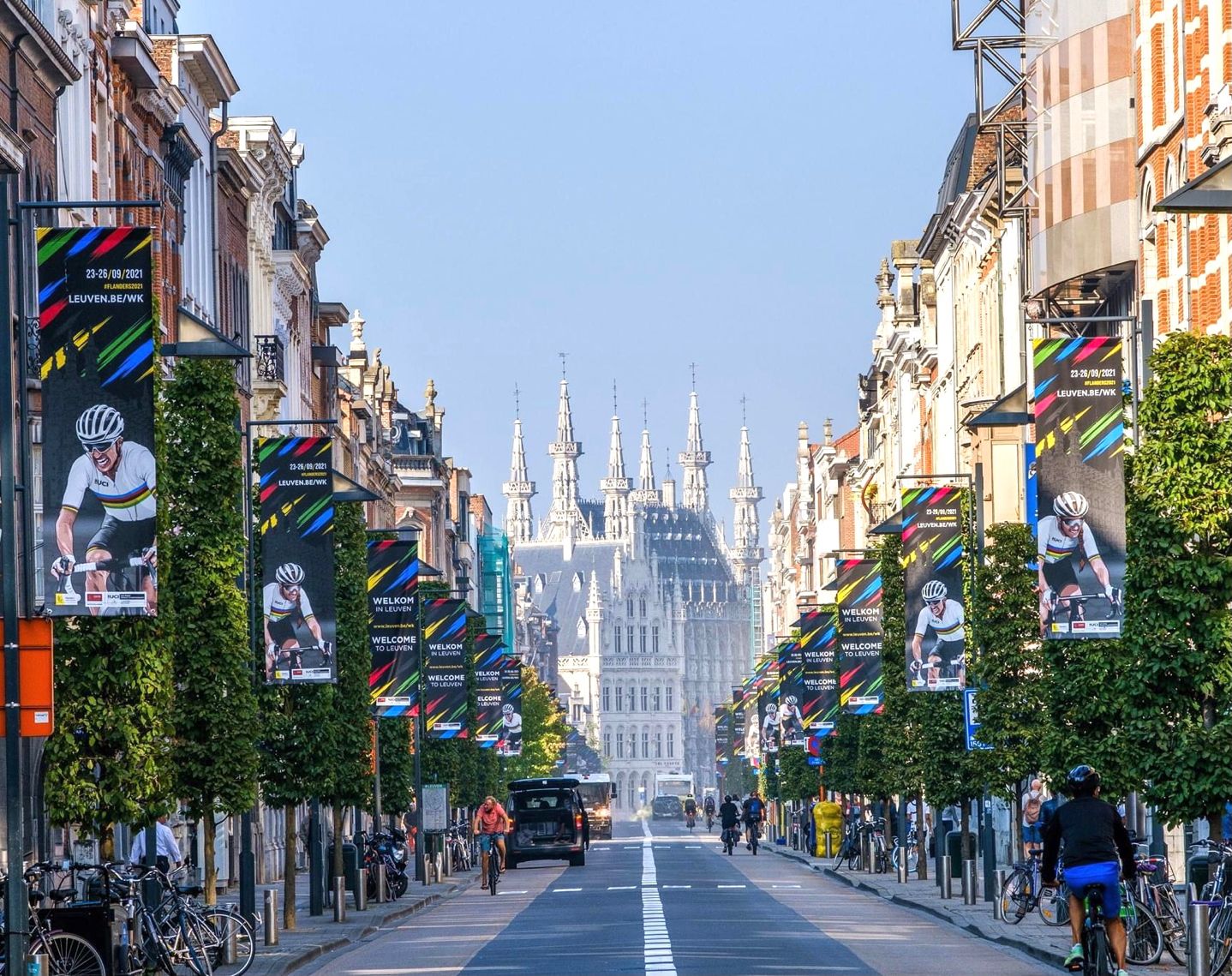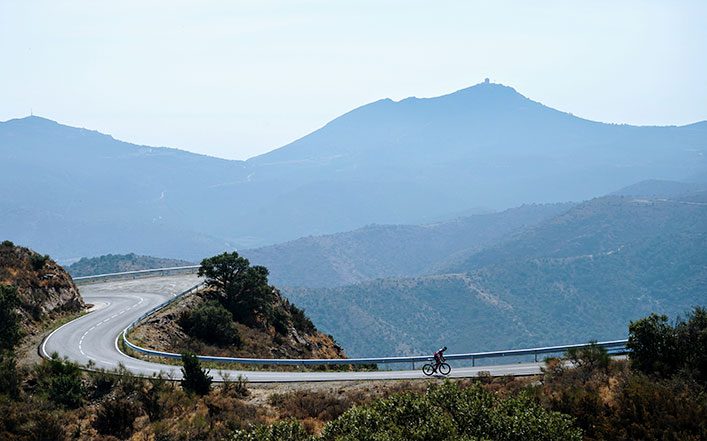Leuven put itself on the map as a cycling destination with the organisation of the World Cycling Championships in 2021. Bruges and Leuven were the main venues. In Bruges, the time trial champions were welcomed, and in Leuven was the fantastic apotheosis with Julien Alaphilippe's win. But Leuven proved to be a worthy cycling city again in 2024: the World Gravel Championship was held here, with participants from all over the world and a course that showcased the best of Flemish off-road terrain. This makes Leuven not only a city of cobblestones, but also of gravel paths, field roads and adventurous gravel routes. Cycling in Leuven has thus become even more interesting.
Flemish Hills
Whoever thinks of Flanders thinks of hills and cobbles. Of course, there is the Wall of Geraardsbergen, the Oude Kwaremont and more such painful introductions to the rolling Belgian countryside. However, the organisers of the 2021 World Cup have chosen to include some, somewhat more unfamiliar hills in the course around Leuven.
Anyway, the hilly landscape of Flemish Brabant is a region to be framed. For the average cyclist it is a treat. Beautiful country roads where you don't see a single chicken, climbs left and right, because no metre is flat here. And you can also find plenty of cobbled lanes. After all, it is also a piece of farm landscape, where the cobblestone has its origins.
The Trail
The Trail
Now back to the course. Because that is mostly uphill, downhill. There is a loop in and around Leuven, but for now we will focus on the 'Flandrien loop' as it is so nicely called. Herewith the most important climbs in a row:
- Smeysberg (600m - 8.1%)
- Veeweidestraat (484m - 5%)
- Bekestraat (440m - 7.6%)
- Taymanstraat - Overijse (800m - 4.4%)
- Moskes Street (500m - 9.1%)
Many of these climbs are (sometimes) included in the Brabantse Pijl, but that is precisely a race that is often a little less watched. So nice that these climbs got attention at World Cup level.
Levelling
As soon as we leave Leuven, one thing becomes clear: this is typical of the Flemish hilly landscape as there is not one metre of flatness. For the average amateur, this takes some shifting, especially if you are used to the dead straight straight polder roads.

Asphalt
We have to swallow the first disappointment right away when we see Smeysberg. Asphalt. Black, smooth asphalt. The decision has been made to call the local BAM in several places and apply some new black smoothness there. This is a shame because this climb would actually be extra painful with the original road surface. In the city of Leuven, too, the decision was made to apply new smooth asphalt to many streets. In itself, this is nice in the city, but on the climbs it is a shame. The Smeysberg is now a dead straight line uphill. With a maximum of 17%. Then again.
Smeysberg, Huldenberg, Belgium
- Distance: 553 m, Height difference: 48 m, Average slope: 8.5 %
On top of Smeysberg, we turn off towards the next funnel, Moskesstraat. This cobbled climb is one of the real sharpshooters of this course and despite its 500 metres in length (short), the 9.1% average is what's really going to hurt. Fortunately, the Moskesstraat is still the cobblestone climb it should be, but again, they did ask the roadworker to straighten everything out a bit more neatly.
After Moskesstraat, you arrive fairly quickly in Overijsse, known for its cross country. Taymanstraat and the twisty section there is a nice challenge and again many will feel pain in their legs. This section is the least steep, but still there is another 800m at over 4% to climb. Surely this will take its toll in the finale.
Suffering pain, cobbled together
After Overijse it's downhill, but as mentioned, the climbs follow each other in rapid succession. The Bekestraat is the next challenge and here, too, the pace is tough. This cobbled climb seems skipped in the whole revamp of the municipality and it is really searching for the right cadence. 'Only' 440 metres, but you can easily lose connection with the front group here.
Around Leuven
If you think the Flandrien loop hurts, remember that the riders also had to ride over a local lap around Leuven several times. That includes the Keizersberg and the Wijnpers. Those are also going to seriously hurt, as they are 400m at 6% and 300m at 7.6% respectively. Bear in mind that you have to go up the Keizersberg seven times and the Wijnpers eight times. Not funny. Especially the Keizersberg is nasty, as it contains a whole section at 10-12%. That does level off, but we can confirm: it really hurts. Our legs also find little happiness in the straight uphill on the Wine Press, which fluctuates little in terms of average.
All in all, in just over 60 kilometres, you quickly pick up around 600 altimeters anyway. That's not bad.
New gravel reputation: World Gravel Championship 2024
In October 2024, Leuven put itself back on the map as an international cycling city by hosting the Gravel World Cup. Starting in Halle and finishing on Leuven's Bondgenotenlaan, the riders had a mix of farm tracks, forest strips, gravel roads and cobblestones before their wheels. The course was technical, physically demanding and, above all, a showcase of what Flemish gravel has to offer. This makes Leuven not only a road cycling capital but also a hotspot for gravel riders. Several routes from the World Cup are now available on Komoot and local route sites.
Alternative: cool off in Hoegaarden
Do you want to end up cycling the World Cup course once and still pick up something else afterwards? You can also visit the village of Hoegaarden nearby (20 kilometres away). The ride there is just as hilly as the rest of the area. However, the reward in the village is very sweet: Hoegaarden is famous for its brewery. The white beer from the local brewer will therefore taste extra delicious.
Cycling in Leuven - road bike routes
Cycling in Leuven is unwinding, enjoying, climbing and exploring at the same time. Also check the sites of Cycling Flanders and Flanders Gravel for current routes and events.

